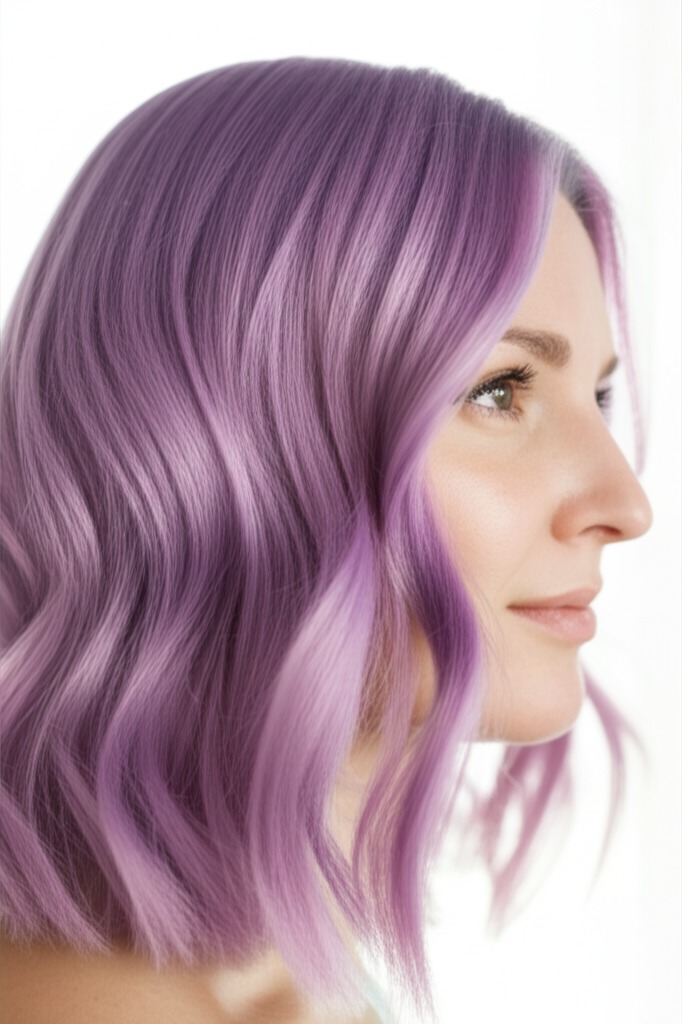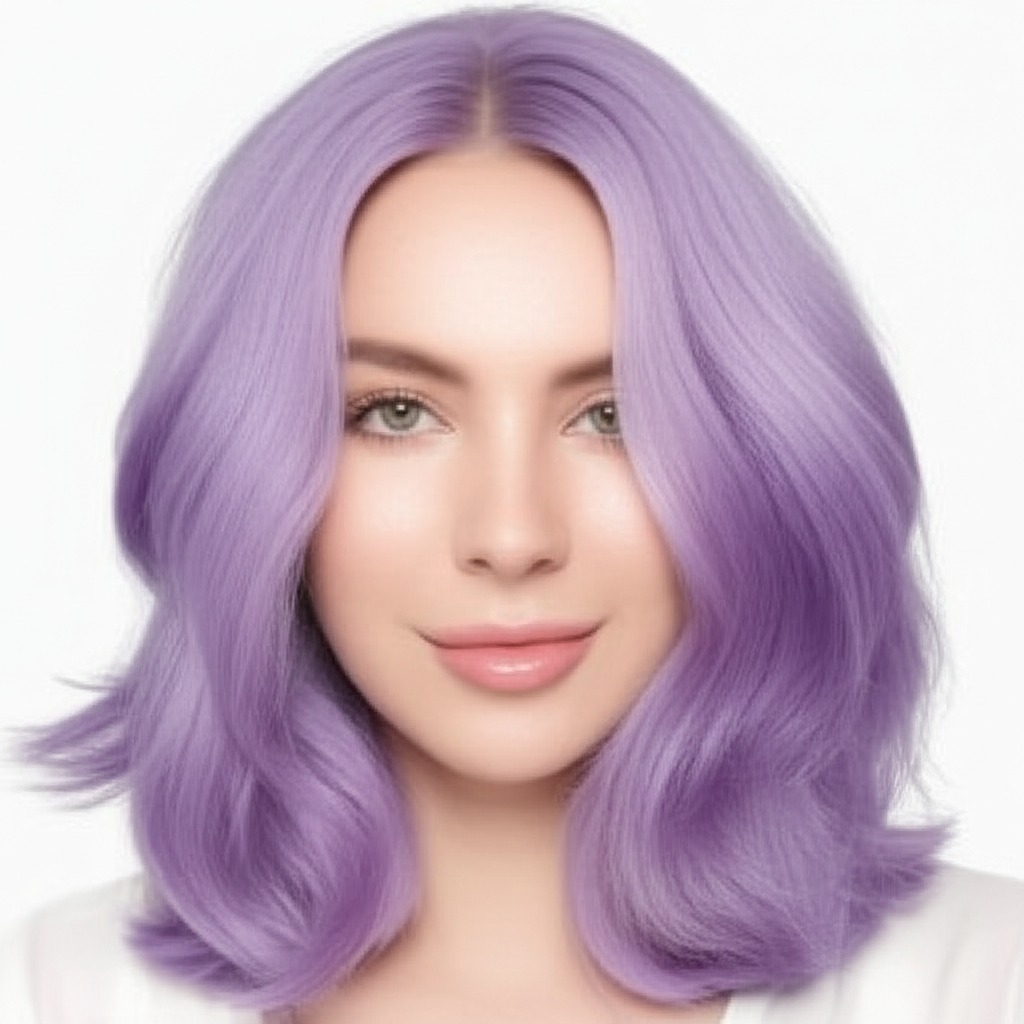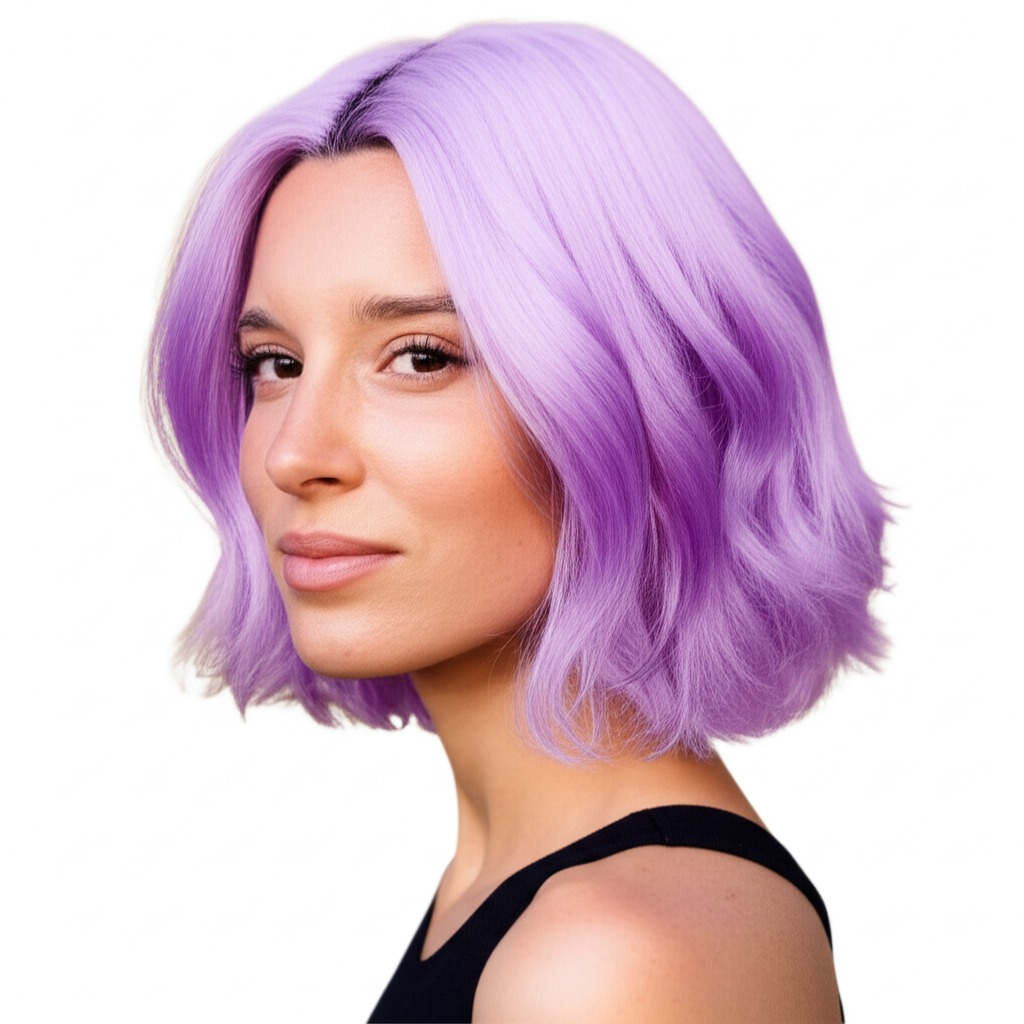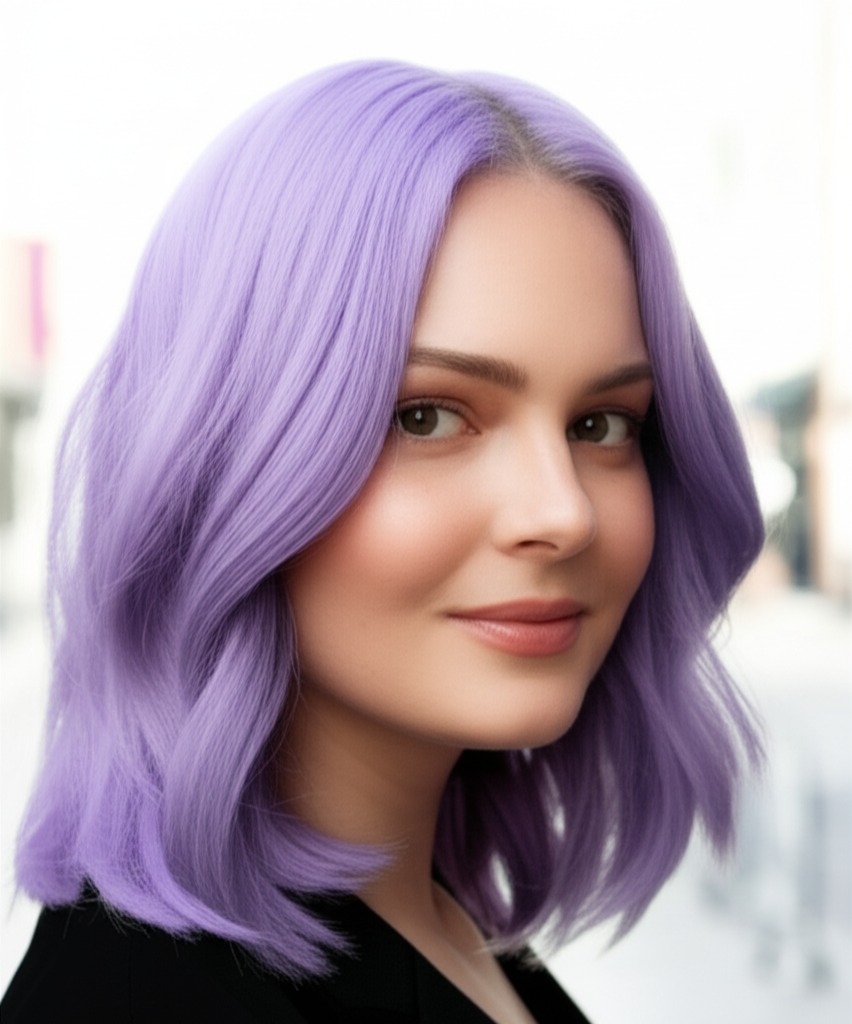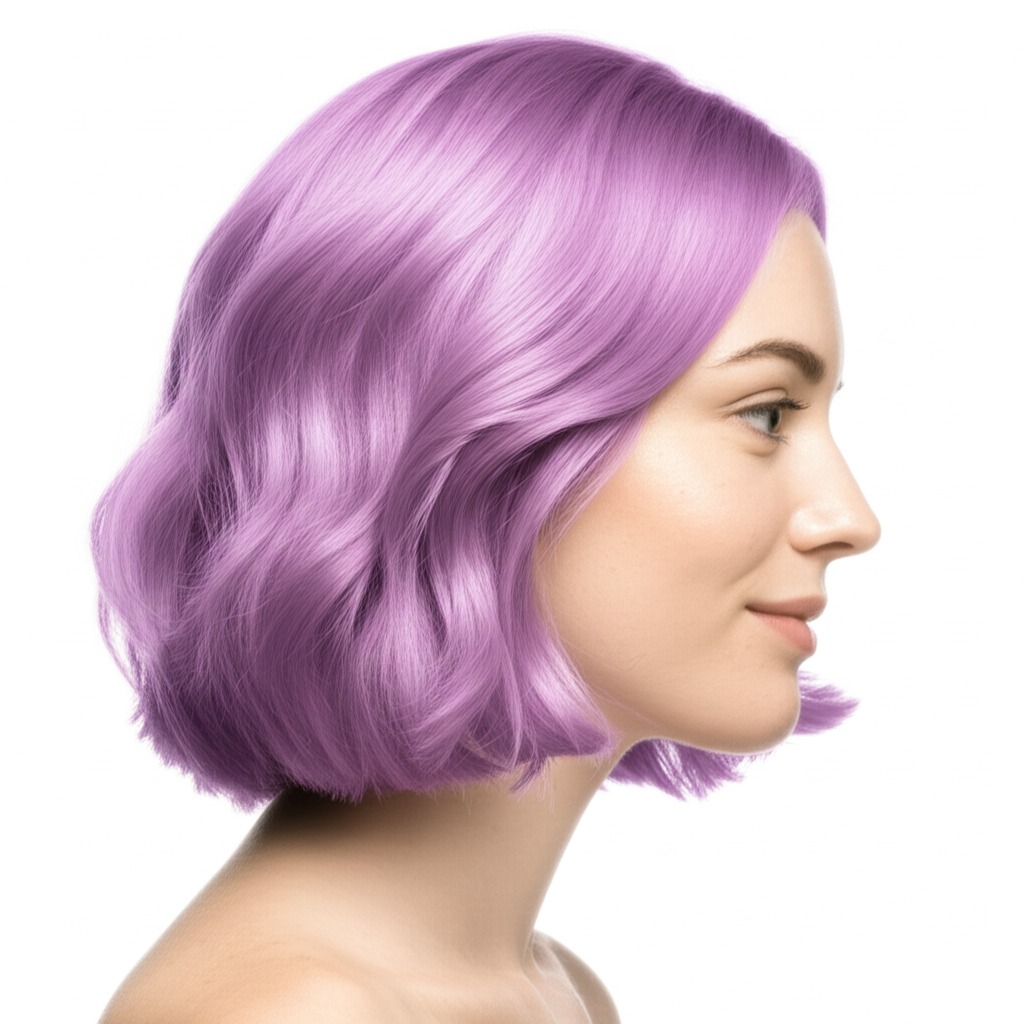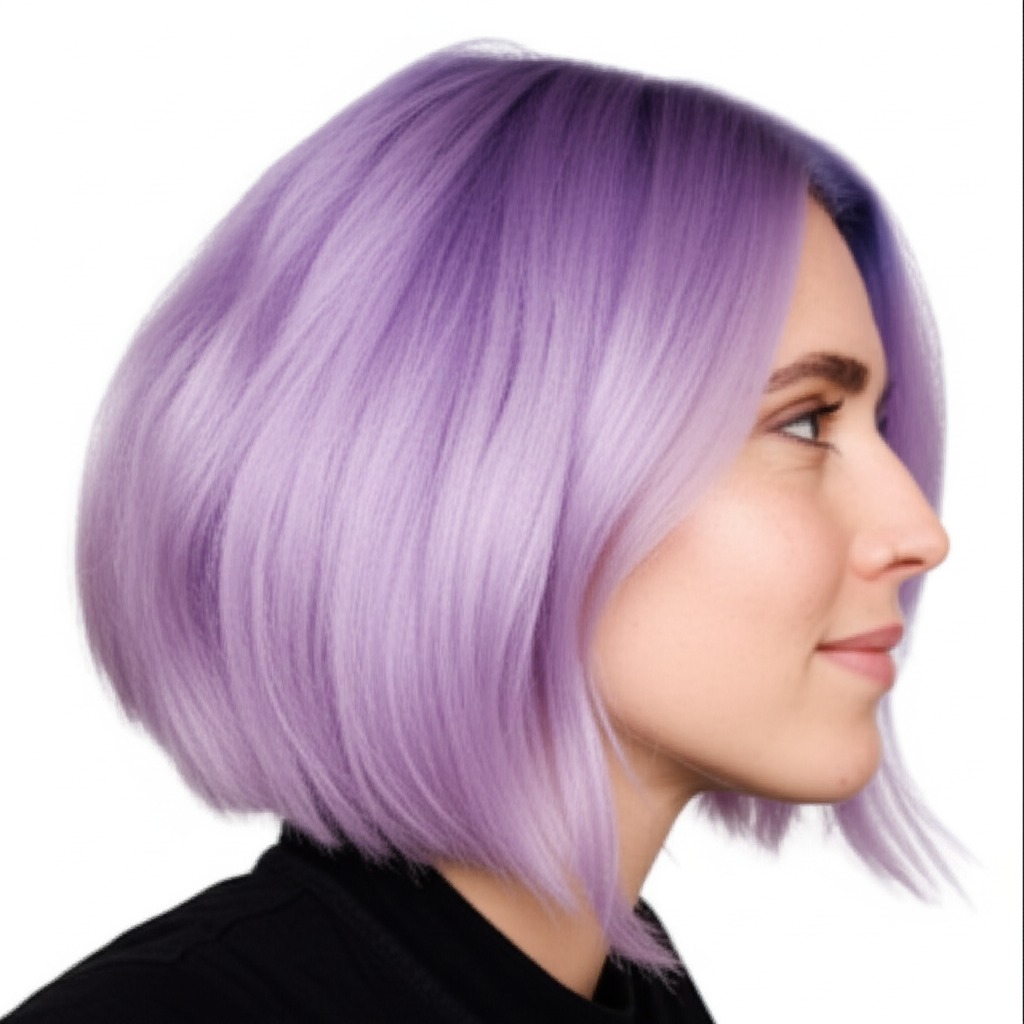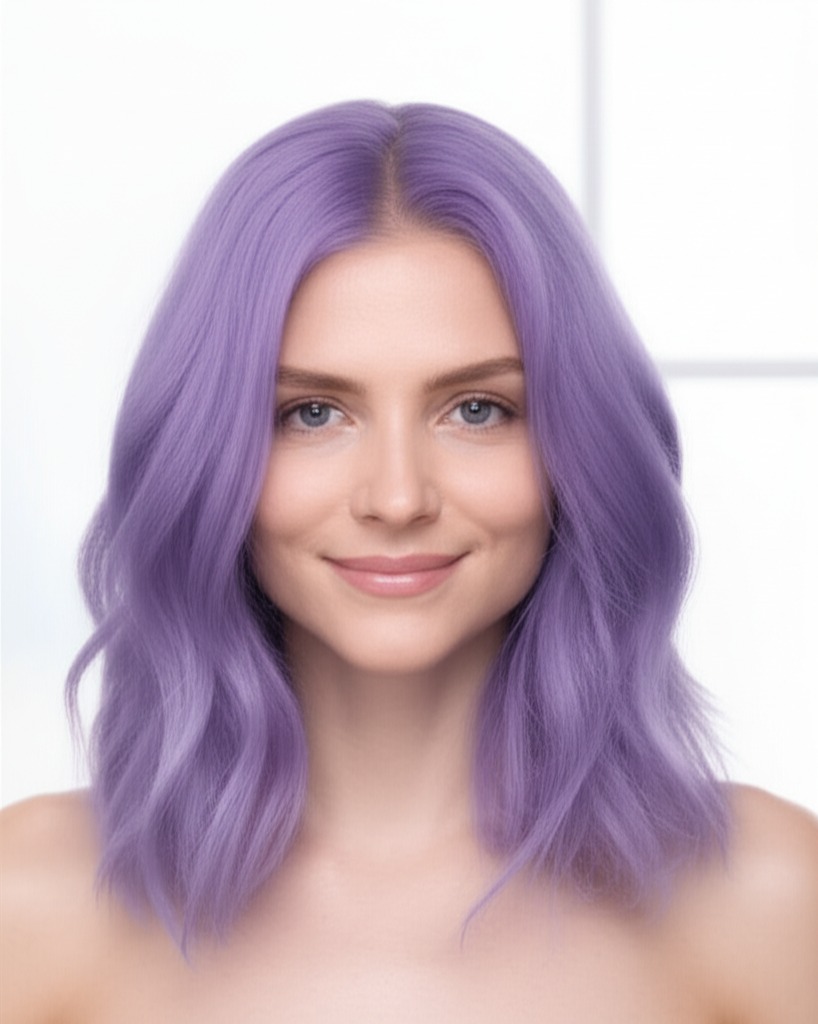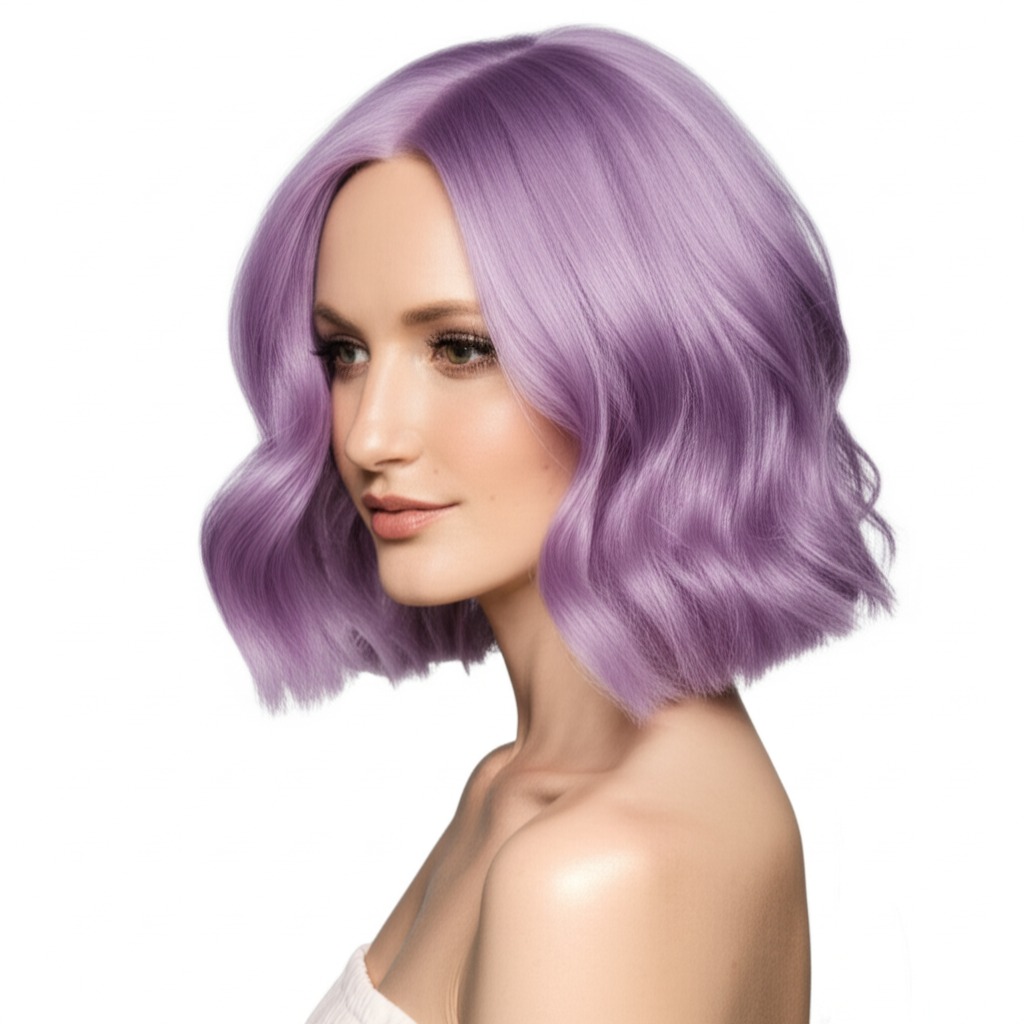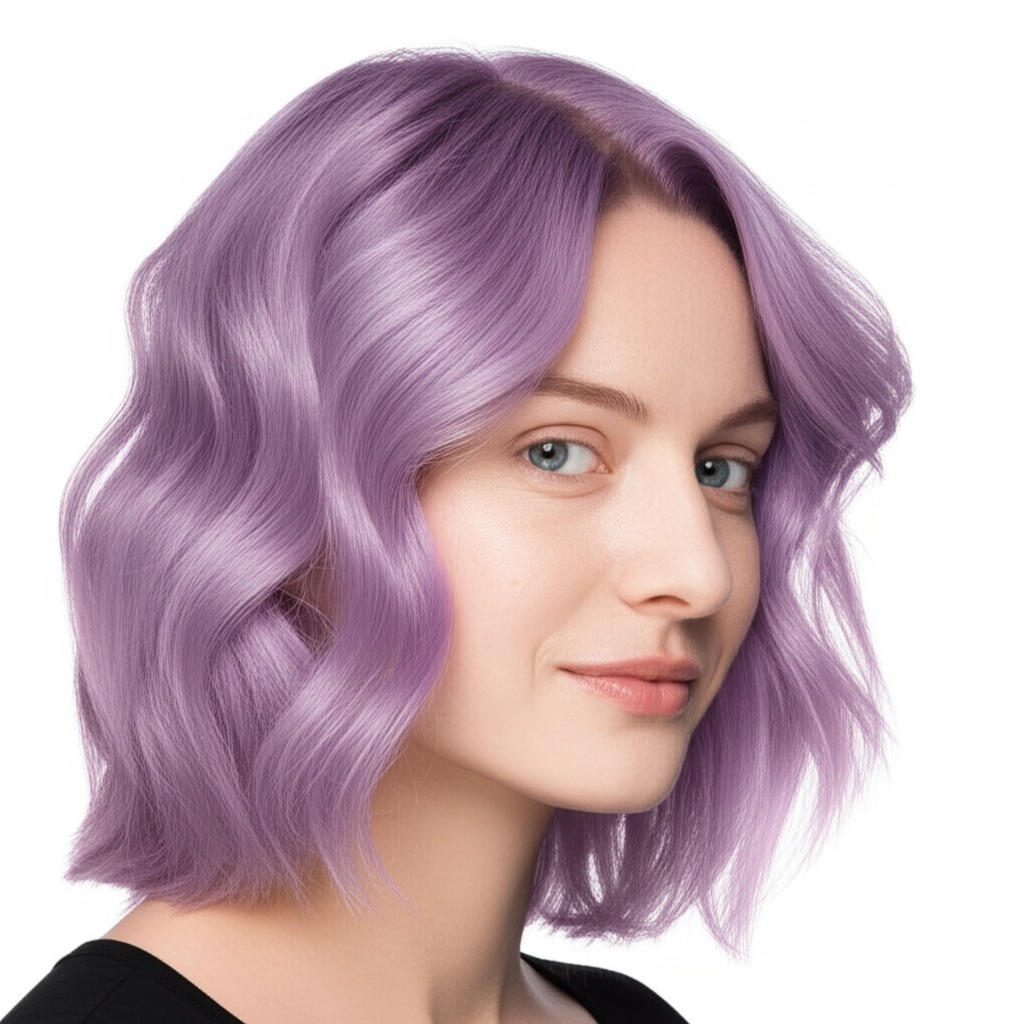#Dive into Lilac Hair: A Guide for Gorgeous Color
Lilac hair – it’s whimsical, dreamy, and undeniably eye-catching! But achieving a truly beautiful lilac look requires more than just slapping on some purple dye. This guide will walk you through everything you need to know about rocking this enchanting hue, from understanding its nuances to keeping it looking fresh. Let's get started!
#1. Understanding Lilac: Shade & Depth
Lilac isn’t just purple. It’s a specific shade – think of the soft, pale purple flowers that give the color its name. Here's what you need to know about its components:
- Undertone: Most true lilacs lean towards cool undertones. This means they have blue and violet notes rather than red or orange. While some lilac shades can be tweaked to appear more neutral, a predominantly cool base is key for the classic look.
- Depth (Levels): Level refers to how dark or light your hair is on a scale of 1-10 (with 1 being black and 10 being the lightest blonde). Lilac needs a very light base to show up properly. Generally, you'll need to be at least a Level 8 blonde (a pale, ashy blonde) for lilac to really pop. The lighter your starting level, the more vibrant the lilac will appear. Deeper lilacs (closer to a dark violet) can sometimes work on darker bases with careful techniques and color theory, but are less common and require significant lightening.
- Variations: Lilac isn't one-size-fits-all! You’ll see variations like:
- Pastel Lilac: The softest, most ethereal version – requires the lightest base.
- Dusty Lilac: A muted lilac with greyish tones; good for a more subtle look.
- Bright Lilac: A bolder, more saturated purple—requires a very light and even base.
#2. Who Does Lilac Flatter?
Choosing a color is about more than just liking how it looks on Pinterest! Here's who typically shines with lilac:
- Skin Tone & Undertone:
- Cool Skin Tones (pink, red, or blue undertones): You’re the ideal candidate! The cool tones in lilac will complement your complexion beautifully.
- Neutral Skin Tones: Can often pull off lilac, but it's important to choose a shade that isn't too intense and consider how it interacts with your specific skin tone. A dusty or muted lilac might be more flattering than a bright one.
- Warm Skin Tones (yellow, golden, or olive undertones): Lilac can sometimes make warm skin tones look sallow. If you're determined to try it, opt for a lilac with slightly warmer violet notes and consult a stylist who understands color theory.
- Eye Color: Lilac tends to enhance cool-toned eye colors: blues, greens, greys, and even cooler browns. It can also create an interesting contrast with warm brown eyes.
- Natural Level Starting Point: As mentioned earlier, you need a light base! Ideally, Level 8 or lighter is required for a true lilac to show up well. If your hair is darker (Level 5-7), be prepared for significant lightening – which takes time and can impact hair health.
#3. Technique Options: From Subtle to Statement
How you apply the lilac makes a huge difference in the final result:
- Single Process: This involves applying color all over your hair. Best suited for those already at a light blonde level or willing to undergo significant lightening.
- Highlights/Lowlights: Lilac highlights on darker hair can create a peek-a-boo effect, adding dimension and softness. Lowlights (though less common with lilac) could add depth if you want a more muted look.
- Babylights: Very fine, delicate highlights that mimic the natural lightness of children's hair. A subtle way to introduce lilac without a drastic change.
- Gloss/Toner: A gloss or toner is applied after lightening and can be used to adjust the undertone of your blonde base before adding the lilac pigment. It’s also crucial for maintaining the color vibrancy over time (more on that later!).
- Balayage-Effect vs. Solid: Balayage creates a blended, natural look with less harsh lines. A solid application provides more even coverage and a bolder statement.
#4. Maintenance & Longevity: The Real Talk
Lilac is notoriously fleeting! Here's what to expect:
- Wash Frequency: Limit washes to 2-3 times per week (or less!) to preserve color vibrancy.
- Toner Refresh: Lilac pigment fades quickly, especially with washing. Plan for a toner refresh every 4-6 weeks – this will keep the shade true and prevent brassiness.
- Root Growth Pacing: As your natural hair grows in, the contrast between your lilac locks and roots can be quite striking. Discuss root smudging or shadow roots with your stylist to soften the transition.
- Budget/Time Planning: This is a commitment! Lightening (if needed) takes time and money. Regular toner appointments add up too. Be prepared for an investment of both resources.
#5. Seasonality & Pairing With Cuts: Style it Right
Lilac’s versatility shines with different styles:
- Bob/Lob: A blunt bob or lob looks incredibly chic with a pastel lilac, creating a modern and sophisticated vibe.
- Long Layers: Long layers add movement and dimension to the color, making it appear even more ethereal.
- Pixie Cut: A pixie cut can handle bold pops of lilac – perfect for an edgy look!
- Seasonal Tweaks: In summer, embrace brighter, pastel lilacs. For fall/winter, opt for a dusty or muted lilac with deeper violet undertones.
- Event Picks: Lilac is fantastic for evening events (parties, concerts) where you want to stand out. For work or daytime, consider a more subtle application like babylights or a toned-down shade.
#6. At-Home Care: Protecting Your Investment
Proper care is essential for keeping your lilac looking its best:
- Sulfate-Free Shampoo: Sulfates strip color! Invest in a high-quality sulfate-free shampoo specifically designed for colored hair.
- Clarifying Cadence: While sulfates are bad, buildup can dull the color. Use a clarifying shampoo occasionally (every 4-6 weeks) to remove residue.
- Heat Protection: Heat styling damages hair and fades color. Always use a heat protectant spray before blow-drying, straightening, or curling.
- Color-Safe Styling Products: Choose products formulated for colored hair – they’re gentler and help preserve the pigment.
- Product Checklist: Sulfate-free shampoo, color-safe conditioner, deep conditioning mask (purple based), heat protectant spray, leave-in conditioner.
#7. Common Pitfalls & How to Avoid Them
- Brassiness: Purple tones can sometimes pull brassy undertones from the hair. A violet-based toner is your best defense!
- Banding: Uneven lightening can lead to banding (distinct lines of color). This requires careful application and potentially multiple sessions with a skilled stylist.
- Patchiness: Insufficient or uneven coverage results in patchy areas. Proper pre-lightening and even color distribution are key.
#8. Pros & Cons: Weighing the Options
Pros:
- Unique & Eye-Catching: Lilac is a statement color that will turn heads!
- Versatile (with the right techniques): Can be adapted to suit different styles and personalities.
- Enhances Cool Tones: Beautifully complements cool skin tones and eye colors.
Cons:
- High Maintenance: Requires frequent toner appointments and careful at-home care.
- Fades Quickly: Lilac pigment is notoriously fleeting, especially with washing.
- Significant Lightening Required (often): Can be damaging to hair if a light base isn't already present.
#9. Salon Consultation Script: Setting Expectations
Before you commit, have an honest conversation with your stylist! Ask these questions:
- "What level do I need to be to achieve the lilac shade I want?"
- "How many sessions will it take to get my hair to the right base?"
- "Can you show me examples of different lilac shades on similar skin tones and starting levels?"
- “What is your plan for preventing brassiness?”
- "What at-home care products do you recommend, and how often should I use them?"
- "What’s a realistic timeline and budget for maintaining this color?"
#10. FAQs: Lilac Specific Questions
- Can I go lilac on dark brown hair? It's possible but requires significant lightening and is more prone to brassiness. A skilled stylist can manage it, but be prepared for potential damage.
- How long will the lilac last before fading? Without toner, expect 4-6 weeks of noticeable fade.
- Is lilac hair damaging to my hair? Lightening always causes some degree of damage. Minimizing processing time and using protective treatments can help mitigate it.
- Can I DIY this color? While possible for those with experience, achieving a professional-looking result is difficult without the right knowledge and tools.
- What if my lilac turns green? This usually indicates that your hair hasn’t been lightened enough or has developed brassiness which reacts with the purple pigment. A violet toner can help correct this.
- Can I go darker after having lilac in my hair? Yes, but it's crucial to clarify the hair thoroughly before applying a new color to avoid unpredictable results.
With careful planning and realistic expectations, you can rock a stunning lilac look that expresses your unique style!
